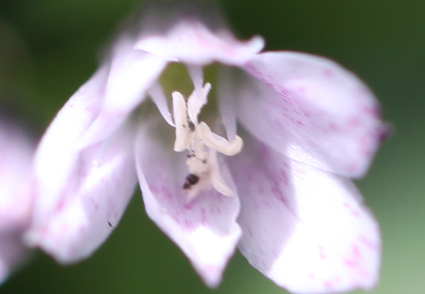Abstract
Thysanotus tibeticum (Asparagaceae) from Jiali, Tibet, China, is described, illustrated and compared with related species. T. tibeticum appears to be related to T. chinensis and T. patersonii due to the similar growth habit, but it can be easily distinguished by the shape of roots, flowering stems, inflorescence, pedicels, inner petals and anthers. Surprisingly, the new species is the only one of Thysanotus found in the Qinghai-Tibet Plateau. The area is also the highest elevation and northernmost latitude distribution area where Thysanotus have been found.
References
- Bentham, G. (1861) Flora Hongkongensis: a description of the flowering plants and ferns of the island of Hongkong. L. Reeve, London, 372 pp. https://doi.org/10.5962/bhl.title.55821
- Brittan, N.H. (1960) New Western Australian species of Thysanotus R.Br. (Liliaceae). Journal of the Royal Society of Western Australia 43: 10–29.
- Brittan, N.H. (1971a) Thysanotus fractiflexus sp.nov. (Liliaceae) endemic to Kangaroo Island, South Australia. Transactions of the Royal Society of South Australi 95: 109–111.
- Brittan, N.H. (1971b) Thysanotus virgatus sp.nov. (Liliaceae) from Royal National Park, New South Wales. Contributions from the New South Wales National Herbarium 4: 265–266.
- Brittan, N.H. (1972) New Western Australian species of Thysanotus R.Br. (Liliaceae). Journal of the Royal Society of Western Australia 54: 76–93.
- Brittan, N.H. (1978) A new species of Thysanotus R.Br. (Liliaceae) from Eyre Peninsula, South Australia. Transactions of the Royal Society of South Australia 102: 55–58.
- Brittan, N.H. (1981) Revision of the genus Thysanotus R.Br. (Liliaceae). Brunonia 4: 67–181. https://doi.org/10.1071/BRU9810067
- Brittan, N.H. (2023) Thysanotus. In: Australian Biological Resources Study, Department of Climate Change, the Environment and Water: Canberra (Org.) Flora of Australia. Available from: https://profiles.ala.org.au/opus/foa/profile/Thysanotus (accessed 30 March 2023)
- Brown, R. (1810) Prodromus florae Novae Hollandiae et insulae Van-Diemen, exhibens characteres plantarum quas annis. Londini 282: 1802–1805. https://doi.org/10.5962/bhl.title.3678
- Chen, X.Q. & Minoru, N.T. (2000) Thysanotus R.Brown. In: Wu, Z.Y. & Raven, P.H. (Eds.) Flora of China 24 (Asparagaceae). Science Press, Beijing, pp. 203–204.
- Conran, J.G. (1998) Lomandraceae. In: Kubitzki, K. (Ed.) The families and genera of vascular plants. Vol. III. Flowering Plants - monocotyledons: Lilianae (except Orchidaceae). Springer Verlag, Berlin, pp. 354–365. https://doi.org/10.1007/978-3-662-03533-7_42
- IUCN Standards and Petitions Subcommittee (2017) Guidelines for Using the IUCN Red List Categories and Criteria. Version 13. Available from: http://cmsdocs.s3.amazonaws.com/RedListGuidelines.pdf (accessed 29 September 2017)
- Jessop, J.P. (1979) Liliaceae I. In: Van Steenis, C.G.G.J. (Ed.) Flora Malesiana Series 1, vol. 9. Noordhoff, The Hague, pp. 189–235.
- Macfarlane, T.D., French, C.J. & Conran, J.G. (2020) A new Fringe Lily from Kalbarri National Park (Thysanotus kalbarriensis, Asparagaceae). Nuytsia 31: 23–27. https://doi.org/10.58828/nuy00940
- Sirisena, U., Macfarlane, T. & Conran, J. (2009) Thysanotus unicupensis (Laxmanniaceae), a new species discovered in Unicup Nature Reserve, south-west Western Australia. Nuytsia 19: 259–263. https://doi.org/10.58828/nuy00568
- Van Steenis, C.G.G.J. (1972) Miscellaneous botanical notes XXII. Blumea: Biodiversity, Evolution and Biogeography of Plants 20: 433–434.


